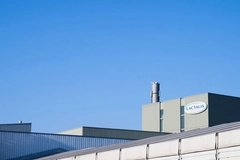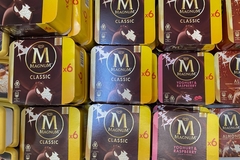European Dairy Association lays out opportunities and challenges in new EU-US dairy deal

The European Dairy Association (EDA) says it largely welcomes the new EU-US Framework Agreement, which lays out how dairy trade across the Atlantic will develop. The organization will hold talks in Washington later this month with US industry, administration, and legislators on how to advance a common approach that safeguards balanced opportunities for both sides.
The Framework Agreement — hashed out by the US government and EU officials last week — offers greater predictability by removing the threat of escalating tariffs and closing the chapter on past surcharges, highlights the EDA. But it does change the framework for dairy trade across the Atlantic.
The new level of customs duties for European exports to the US has been raised to 15%.
Important gains
The EDA acknowledges important gains from the revised Framework Agreement, like its introduction of substantial new market openings on the EU side. The deal plans to create 20,000 metric tons of tariff-free Tariff-Rate Quotas (TRQs) for US dairy products.
The EDA says this represents a significant commitment to new market access beyond existing WTO quotas, which are reserved exclusively for US origin.
“The new quotas cover milk and cream, yogurt, dairy spreads, anhydrous milk fat, lactose, ice cream, and a wide range of cheeses, including Cheddar, processed, and grated cheese. These products will face new competition from the US imports entering duty-free. Pressure is expected above all in commodity cheese and dairy ingredients,” Laurens van Delft, director of trade and economics at the EDA, tells Food Ingredients First.
“EU dairy lines that previously entered the US below 15% will now face higher costs. On the import side, the most sensitive categories are Anhydrous Milk Fat, lactose, Cheddar and processed cheeses, which fall directly under the new tariff-free TRQs.”
Rising costs
While the 15% ceiling provides a “certain predictability,” it will lead to higher costs for EU dairy products.
“Companies are expected to shift their portfolios toward higher-value products while being cautious on bulk exports,” van Delft continues.
“EU processors can remain competitive, focusing on our unrivalled quality, for instance, in cheese, and our research and innovation advantage within the ingredient portfolio, where US exporters cannot easily compete.”
“This may help to mitigate the impact of a 15% tariff on our products in the US, but we will have to monitor quota fill rates closely to anticipate import surges.”
The EDA is also concerned that other trading partners may seek similar treatment under WTO non-discrimination rules, and the EU and member states will need to assess the long-term impact on their dairy industry.
WTO consistency
During the EU-Mercosur negotiations, the EU obtained access to the Mercosur region for 10,000 tons of cheese after 20 years. This latest Framework Agreement immediately offers the same volume to US exporters.
“The US receives the same level of market access in terms of cheese volume to the EU that the EU secured in Mercosur only after more than two decades of talks. That shows how significant this step is and raises questions for other partners about the balance of concessions,” says van Delft.
“We are in constant contact with the competent services of the European Commission and exchange views regularly. This package, however, was tabled very quickly, and the EU Commission did, in our view, not act with the extent of transparency we are used to. Our main concerns on reciprocity and WTO consistency are not really reflected in the final text,” he concludes.


















